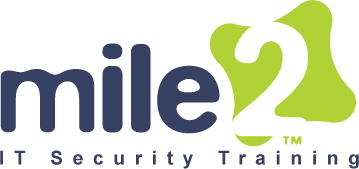C)IHE: Certified Incident Handler Engineer
Target group
- Penetration Testers
- Microsoft Administrator
- Security Administrators
- Active Directory Administrators
- Anyone looking to learn more about security
Description
The C)IHE - Certified Incident Handling Engineer course, is designed to help Incident Handlers, System Administrators, and Security Engineers understand how to plan, create, and utilize their systems to prevent, detect, and respond to attacks through the use of mile2's live hands-on Cyber Range. Mile 2 C)IHE strictly follows NIST's 800-61 to identify the four phases of incident response: (1) preparation for a cybersecurity incident, (2) detection and analysis of a security incident, (3) containment, eradication, and recovery, and (4) post-incident analysis. With C)IHE's in-depth certification training, the student will learn to develop start-to-finish processes for establishing an incident-handling team, strategizing for potential attack types, recovering from attacks, and much more.
Program
- Duration : 5 days
Module 01: Incident Handling Explained
- Section 1: Introduction
- Section 2: What is an Incident?
- Section 3: What is Incident Handling?
- Section 4: Difference Between IH and IR
- Section 5: The Incident Response Process
- Section 6: Seven Reasons You Must Put Together an Incident Response Plan Section 7: How to Build an Effective Incident Response Team
- Section 8: Considerations for Creating an Incident Response Team
- Section 9: Tips for Incident Response Team Members
Module 02: Incident Response Policy, Plan and Procedure Creation
- Section 1: Introduction
- Section 2: Incident Response Policy
- Section 3: Incident Response Plan
- Section 4: Incident Response Procedures
- Section 5: Sharing Information with Outside Parties
Module 03: Incident Response Team Structure
- Section 1: Introduction
- Section 2: Team Models
- Section 3: Team Model Selection
- Section 4: Incident Response Personnel
- Section 5: Dependencies within Organizations
Module 04: Incident Response Team Services
- Section 1: Introduction
- Section 2: Intrusion Detection
- Section 3: Advisory Distribution
- Section 4: Education and Awareness
- Section 5: Information Sharing
Module 05: Incident Response Recommendations
- Section 1: Introduction
- Section 2: Establish a formal Incident Response Capability
- Section 3: Establish Information Sharing Capabilities
- Section 4: Building an Incident Response Team
Module 06: Preparation
- Section 1: Introduction
- Section 2: Threat Hunting
- Section 3: Threat Analysis Frameworks
- Section 4: Tools and Toolkits
- Section 5: Policy
- Section 6: Procedures
- Section 7: Preventing Incidents
Module 07: Detection and Analysis
- Section 1: Attack Vectors
- Section 2: Signs of an Incident
- Section 3: Sources of Precursors and Indicators
- Section 4: Incident Analysis
- Section 5: Incident Documentation
- Section 6: Incident Prioritization
- Section 7: Incident Notification
Module 08: Containment, Eradication and Recovery
- Section 1: Selecting the Right Containment Strategy
- Section 2: Gathering and Handling Evidence
- Section 3: Identifying the Attacking Hosts
- Section 4: Eradication and Recovery
Module 09: Post Incident Activity
- Section 1: Introduction
- Section 2: Lessons Learned
- Section 3: Using Collected Incident Data
- Section 4: Evidence Retention
Module 10: Incident Handling Checklist
- Section 1: Introduction
- Section 2: Building Checklists
Module 11: Incident Handling Recommendations
- Section 1: Introduction
- Section 2: Recommendations
- Section 3: Implement Threat Intel
Module 12: Coordination and Information Sharing
- Section 1: Introduction
- Section 2: Coordination
- Section 3: Purple Teaming
- Section 4: Information Sharing Techniques
- Section 5: Granular Information Sharing
- Section 6: Sharing Recommendations
Goal
Upon completion, Certified Incident Handling Engineer students will know NIST's 800-61 four incident handling phases, be able to accurately report on their findings, and be ready to sit for the C)IHE exam.
Prerequisites
- 12 months network technologies
- Sound knowledge of networking and TCP/IP
- Linux knowledge is essential
Tarif
- 3250 €
- Language : English
- Level : Level 350
- Certification body : Mile2
- Certification: Yes
- Accessibility : Yes
- Duration: 5 days
Important information:
Our courses are not registered with the Répertoire National des Certifications Professionnelles (RNCP), but they do comply with the requirements of the Répertoire Spécifique (RS).

